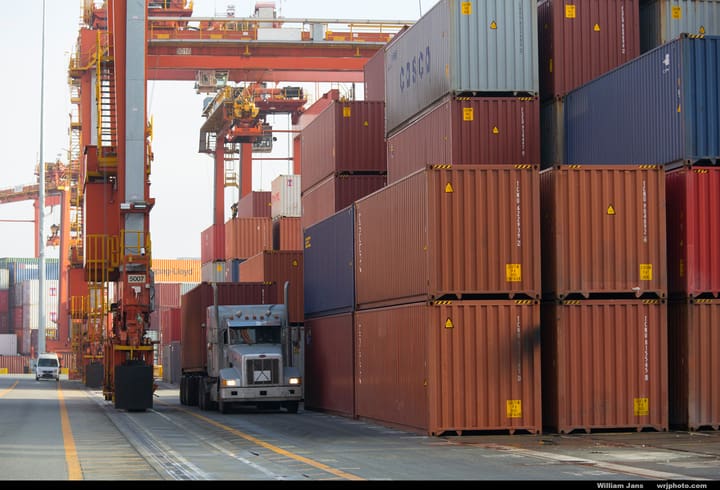Shippers across the globe are looking for strategies to improve port container management amidst a supply chain still reeling from pandemic-imposed congestion. According to Hellenic Shipping News, a global study indicated that the United States was “the second-worst performer in terms of the average median time containers spent in depots in 2021,” with an average dwell time of 50 days. Amidst the “get rich quick” suggestions that optimize today’s transport into the US, there are a few nuggets of true gold for shippers to consider — including cross-docking.
What Is Cross-Docking?
Cross-docking is a transportation strategy by which freight is moved directly from one mode of transportation to another without the need for storage. Cross-docking can be done at all ground transportation locations, such as international freight’s first stop: the port or at truck terminals and rail yards. Cross-docking port drayage is a specific strategy where cross-docking begins at the port to haul freight a short distance to a warehouse or distribution center, getting shipments out of congested ports and on their way to final destinations.
The Benefits of Cross-Docking
The primary goal of cross-docking is optimizing the logistical efficiency of distribution. Therefore, by efficiently doing what has to be done already, shippers and forwarders who utilize cross-docking port drayage can reduce overall transportation costs, dwell times, and the fees associated with them. However, this strategy simultaneously allows businesses to maintain the flow of products without increasing inventory storage. By reducing the overall cycle time of orders, companies discover more opportunities to serve their customers well.
The nature of cross-docking can require more logistical planning than a typical port pickup. Shippers and freight forwarders who want to explore cross-docking should utilize drayage appointment tech to minimize confusion of ETA or the document management needed for a quick transfer of tender. As west coast ports lead the way in eco-friendly initiatives that place fees on non-exempt trucks, partnering with a local-to-port 3PL may be helpful to navigate port-specific fees and charges.
Cross-docking Port Drayage Reduces Dwell Time and Costs
Proper understanding of demurrage, detention, and per diem charges reveals an important niche need for cross-docking port drayage. Minimizing load complexity for freight that will be cross-docked removes the potential for prolonged unloading that can result in demurrage fees. Decreasing time at the docks between freight arrival and departure enables shippers to improve turn times that prevent detention and per diem charges. On top of this, cross-docking reduces dwell time which reduces carrier costs.
Cross-docking in Port Drayage Can Augment Short-Term Storage Solutions Too
Cross-docking is an essential piece of overall supply chain efficiency. By avoiding temporary storage, shippers can cut down on warehouse needs and costs. In addition, removing this leg of a freight’s transportation improves overall sustainability by eliminating the fuel utilized during the transport and dwell time, as well as the resources used at storage. Of course, some shipments may still require short-term storage, but the trick is knowing which can be cross-docked to get on the road faster and which need a day or two in the storage facility.
How Do You Know if Your Port Has the Capacity for Cross-docking Port Drayage Services
In May 2021, the Journal of Commerce announced that the Port of Savannah will “build what will be one of the first cross-dock facilities within a US container port.” Although the West Coast ports have traditionally been more frequented, Savannah’s port has been making a name for itself by developing an addition that will handle 400,000 TEU capacity to clear the backlog. And that added capacity means shippers may have the physical space necessary to start and use cross-docking strategies. Shippers can contact their local port authorities to see if they will follow in Savannah’s footsteps and whether space is available for cross-docking.
Lower Your Risk of Added Dwell Costs With PortCity
Shippers and freight forwarders who thoughtfully incorporate cross-docking port drayage are on the fast track to minimizing dwell time, as well as port and carrier fees. Cross-docking provides the opportunity to shorten overall order cycle length without increasing inventory and warehouse costs. To find out how this transportation technique can impact your shipping business for the better, connect with PortCity today.
